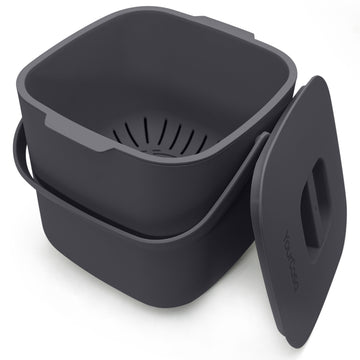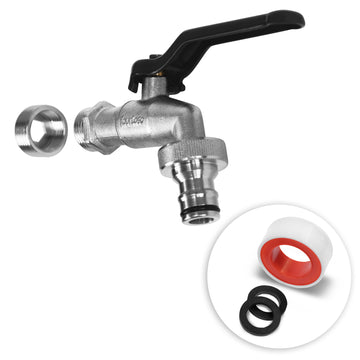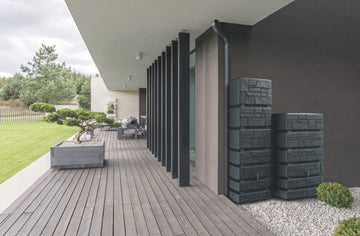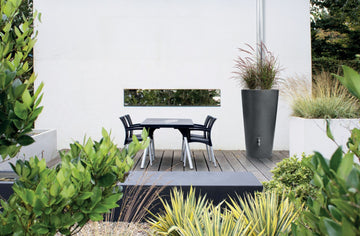Autumn gold: effectively transform garden waste into compost
by Robert Zielinski on Mar 25, 2024
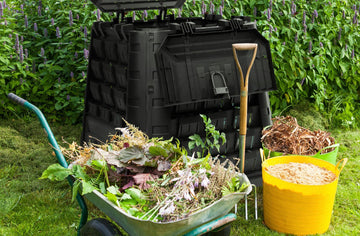
Every year, autumn bathes your garden in bright colors, but also leaves behind an abundance of leaves and plant remains . This may be a lot of work at first, but it has great potential: the conversion into valuable compost.
How can I effectively turn garden waste into compost? To effectively turn garden waste into compost, start by collecting leaves, plant debris and kitchen waste such as vegetable peelings. Place these in your composter. Alternate layers of green (nitrogen-rich) and brown (carbon-rich) materials. Make sure to keep the compost pile moist and turn it regularly to ensure good aeration. This process promotes decomposition by microorganisms and thereby converts waste into nutrient-rich compost.
In this article, you will learn in detail how to compost garden waste effectively and how to make the best use of your garden equipment from YourCasa for this purpose. This way, saying goodbye to summer will be a preparation for a blooming awakening next spring.
Why autumn is the perfect time for composting
Autumn offers ideal conditions for composting – for several reasons. In our latitudes, autumn is primarily known for its bad weather. It rains, is windy and slowly gets colder.
Of course, as the hours of sunshine decrease, so does the activity in the garden. At the same time, the leaves begin to fall more frequently, which in turn brings with it plenty of organic waste , which forms the basis for nutrient-rich compost.
The mild temperatures and increased humidity in autumn promote the activity of microorganisms that are crucial for the decomposition process. And the cold season is also good for yourcompost not as bad as you might think. Although the composting process tends to slow down at low temperatures, your compost still has more than enough time over the winter to completely decompose all the materials collected in the fall. This turns them into high-quality fertilizer that you can use directly in the garden in the spring. This closes the cycle of nature and optimally prepares the soil for the next growing season.
Collect and sort garden waste
There are several things that are important for composting to work well and efficiently . The main thing, however, is to mix the waste well and ensure adequate ventilation. By mixing different types of waste, you ensure that your compost has a balance of nitrogen and carbon, which creates ideal living conditions for the microorganisms that are so important for the composting process. Read on to find out which waste is best suited for your compost.
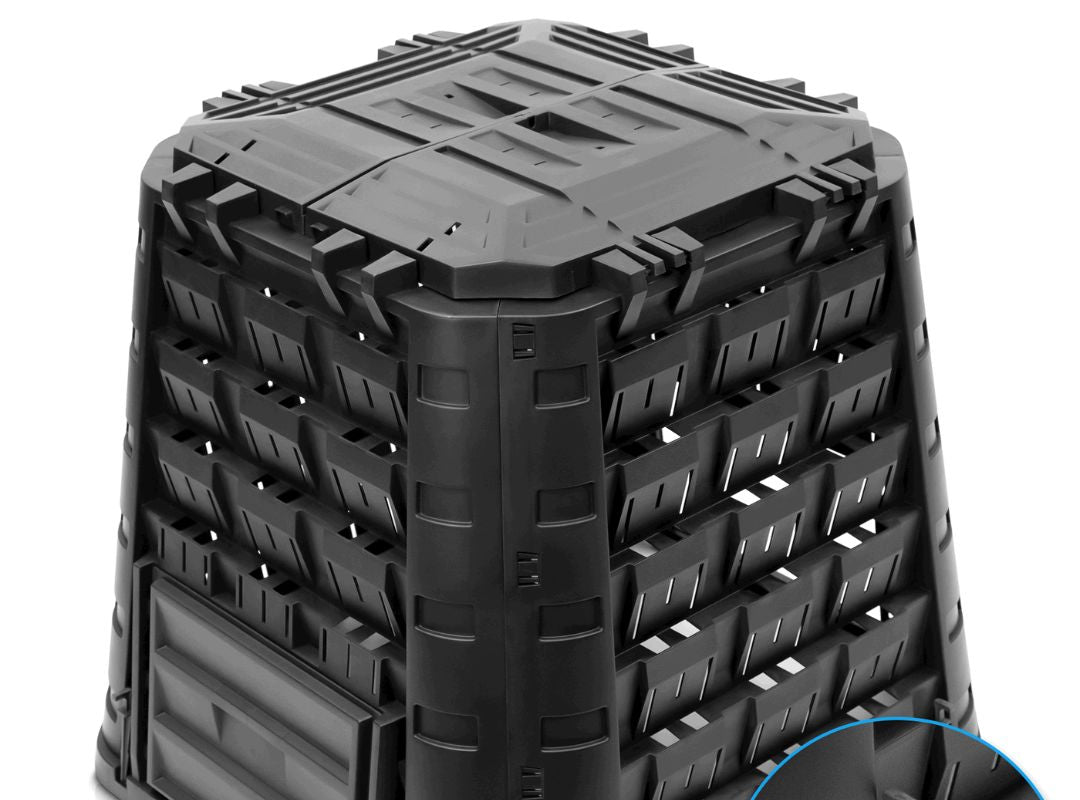
Which waste is suitable for compost?
If you add the following types of waste to your compost heap , nothing will stand in the way of efficient composting - because they provide exactly the ideal mixture of nitrogen and carbon that promotes the growth of microorganisms:
| Waste type | Why they are suitable | Tips |
| Leaves and branches | Rich in carbon, promote ventilation | Chop up large branches to speed up the decomposition process |
| Kitchen waste (vegetable peelings, coffee grounds) | Rich in nitrogen, promotes microorganisms | Do not add cooked food or animal products to avoid pests |
| Lawn cutting | Rich in nitrogen, accelerates composting | Apply in thin layers to prevent mold growth |
| Old plants | Nutrients for compost | Avoid diseased or pest-infested plants |
Tips for efficient collection
Collecting waste efficiently requires a bit of organization and planning - because ideally you shouldn't just throw everything together, but rather proceed in a structured manner. In the fall, therefore, prepare different containers in your kitchen and garden in advance, each of which collects a different type of waste. Make sure to take waste to the compost heap regularly to avoid odors and pest infestations.
Use garden tools such as rakes and wheelbarrows to regularly collect plant remains and leaves. If you collect them consistently and frequently and keep your waste properly separated, you will lay the foundation for a rich, nutrient-rich compost.
Set up or refresh compost heap in autumn
Autumn is the perfect time of year to start composting or to refresh existing compost systems. The transition from summer to the cold season offers a wealth of organic materials that you can easily collect and add to your compost pile - leaves, plant remains and even kitchen scraps are perfect.
Basics of composting
Composting is really not difficult - but there are a few things to keep in mind. Successful, productive composting is based on the balance between carbon-rich "brown" and nitrogen-rich "green" materials. Brown materials provide the structural base of the compost and promote aeration, while green materials contribute essential nutrients and moisture. Regular aeration by turning the compost is crucial to ensure an aerobic decomposition process . which prevents unpleasant odors and speeds up decomposition. The right moisture is also important; the compost should be moist but not wet.
Autumn-specific compost materials
In autumn, specific materials are produced that are particularly suitable for composting . You can read about them here:
- Leaves: Rich in carbon, leaves help improve the structure of the compost and promote aeration. Ideal as a "brown" material.
- Fallen branches and twigs: These help to aerate the compost heap. They should be cut into small pieces to speed up decomposition.
- Summer plants: Add nitrogen to the compost and decompose relatively quickly. Diseased plants should be avoided.
- Grass clippings: Serves as an excellent source of nitrogen. Should be added in thin layers to promote aeration and prevent rotting processes.
- Fruit and vegetable waste from the kitchen: Rich in nutrients and moisture, they speed up the composting process. To avoid pests, cooked food, meat and dairy products should be excluded.
- Fall flowers and perennial remains: After flowering, these plant remains provide green material that increases the nitrogen content of the compost.
- Coffee grounds and tea leaves: Warm drinks are perfect when it gets colder outside. Leftovers such as coffee grounds and tea leaves are rich in nitrogen and other nutrients and promote the activity of microorganisms in the compost.
Preparing the rain barrel for autumn
If you already have a rain barrel in your garden or want to get one, you should be aware that you also need to prepare it for autumn and winter. Here's how to do it.
Protection against low temperatures
In autumn, temperatures begin to drop - this is often the time of year when the first frost occurs. To prevent damage caused by ice formation , it is advisable to empty the bin at least partially, but ideally completely, as water expands when it freezes and can therefore strain the material. Insulating the bin, for example with special covers or simple covers, can also help to prevent residual water from freezing. Don't forget to empty the tap and cover or dismantle it in severe frost to avoid frost damage.
Optimizing water collection in autumn
Autumn is usually a time of year when rain is plentiful, making it the ideal time to collect as much rainwater as possible . To do this, make sure your gutters and filters are clear of leaves to ensure ideal flow. Also, check your overflow system to avoid overloading during heavy rains.
Autumn favorites from the online shop
In the YourCasa shop you will find everything you need for a successful autumn – from rain barrels to composters to helpful accessories.
Rain barrels for autumn
Are you looking for an ideal rain barrel for autumn and winter ? Then you've come to the right place at YourCasa. The following are some of our most popular models:
| name | Characteristics | Price (€) |
| EcoDrop | 200 litre capacity, with metal thread and lid, available in granite, grey and sand | 159.99 |
| PureRain | 280 litre capacity, with metal thread and lid, available in anthracite, grey, beige, light grey, granite black and violet | 219.99 |
| Eco Tower | 260 litres or 720 litres capacity, square and narrow for limited spaces, without tap, metal thread | 399.99 |
| Aqua Silo | 350 to 650 litre capacity, available in grey and anthracite | 149.99 |
| Decore | 230 litre capacity, with tap and planter, available in anthracite and terracotta | 129,00 |
Composter for autumn leaves
YourCasa also offers composters – both for a healthy garden and for the kitchen . Our customers particularly like the following:
| name | Characteristics | Price (€) |
| EcoFusion | Garden composter with 450 litre capacity, lockable lid for optimal wind and weather protection | 84.99 |
| Compost bin kitchen 6l | Kitchen composter with 6 litre capacity, washable, with lid and filter | 44,99 |
| Compost bin kitchen 4l | Kitchen composter with 4 litre capacity, washable, odour-proof | 52.00 |
| Stainless steel compost bin | Kitchen composter with 4.3 litre capacity, washable, odour-proof | 39,99 |
| Organic waste bin 7l | Kitchen composter with 7 litre capacity, dishwasher safe, odour-proof | 52.00 |
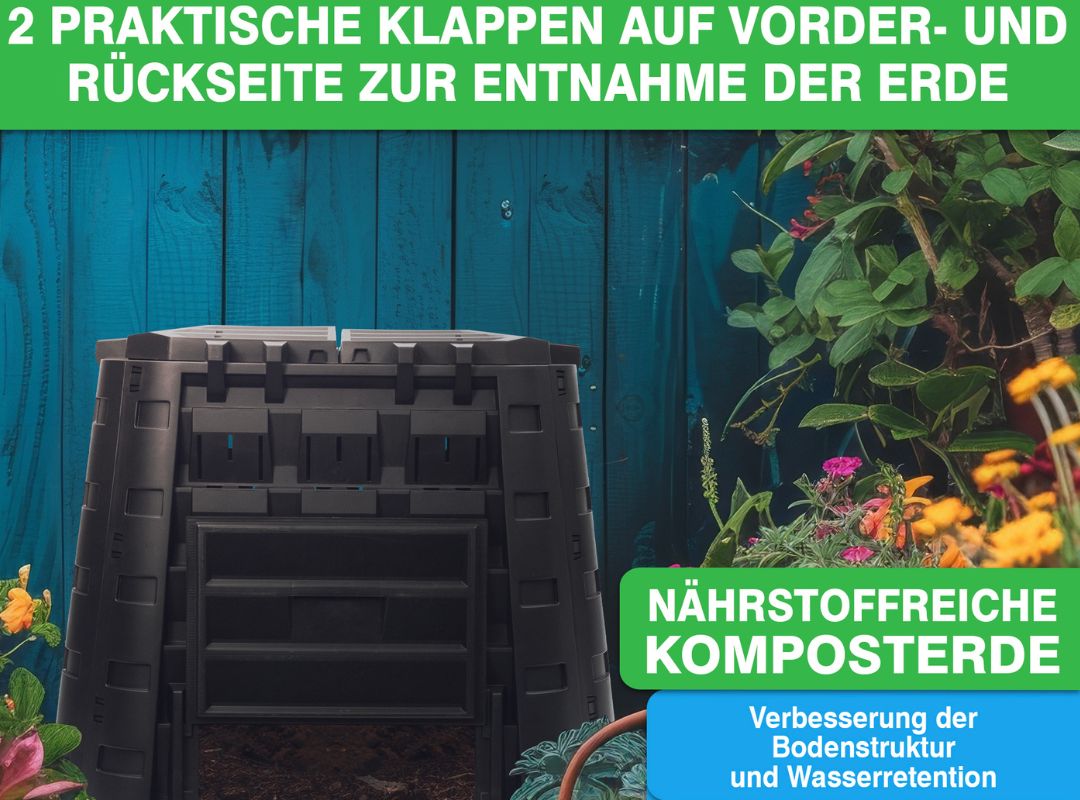

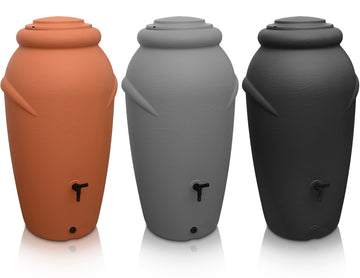
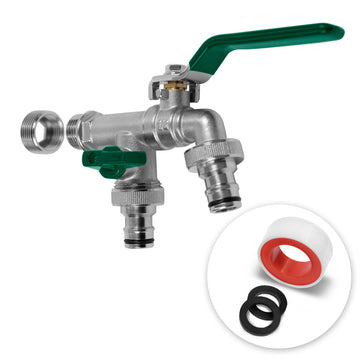
![Drei hohe YourCasa Regentonne 240 Liter [Wellen-Design] - Frostsicher & UV-beständige Gartentöpfe in den Farben Schwarz, Grau und Terrakotta, jeweils mit Drainagesystem für nachhaltige Bewässerung.](http://yourcasa.de/cdn/shop/files/ohnelogo_b8aeecac-557e-4106-a999-e77dcd160209.jpg?v=1707130230&width=360)
